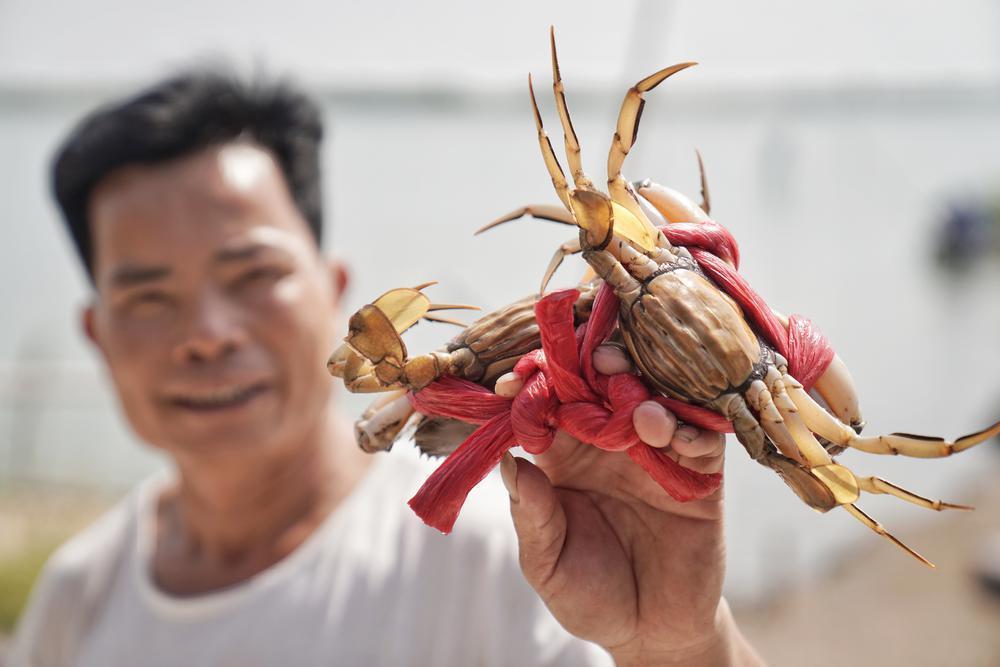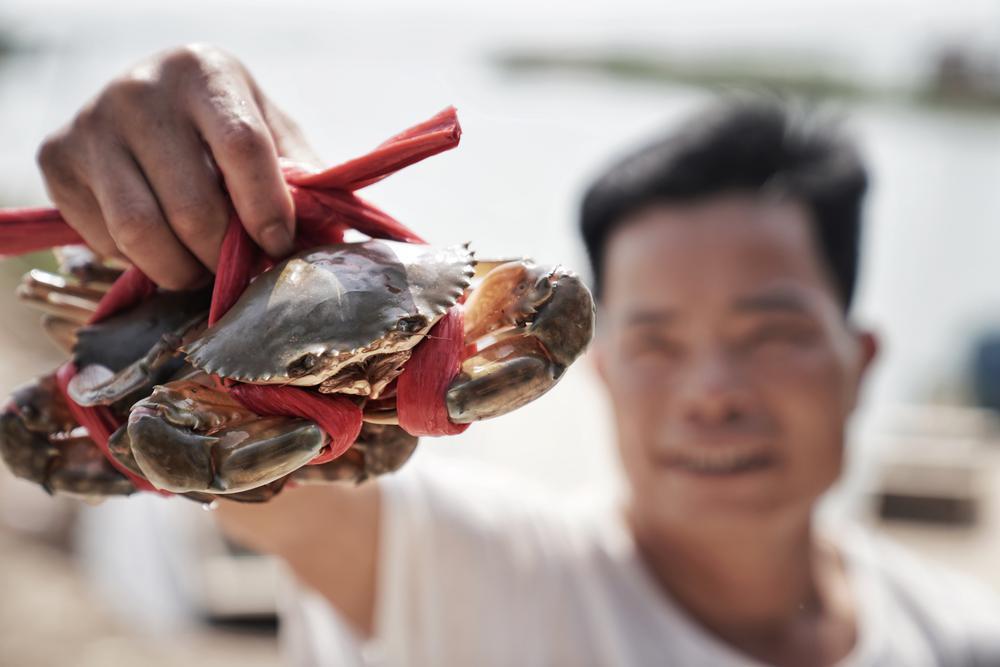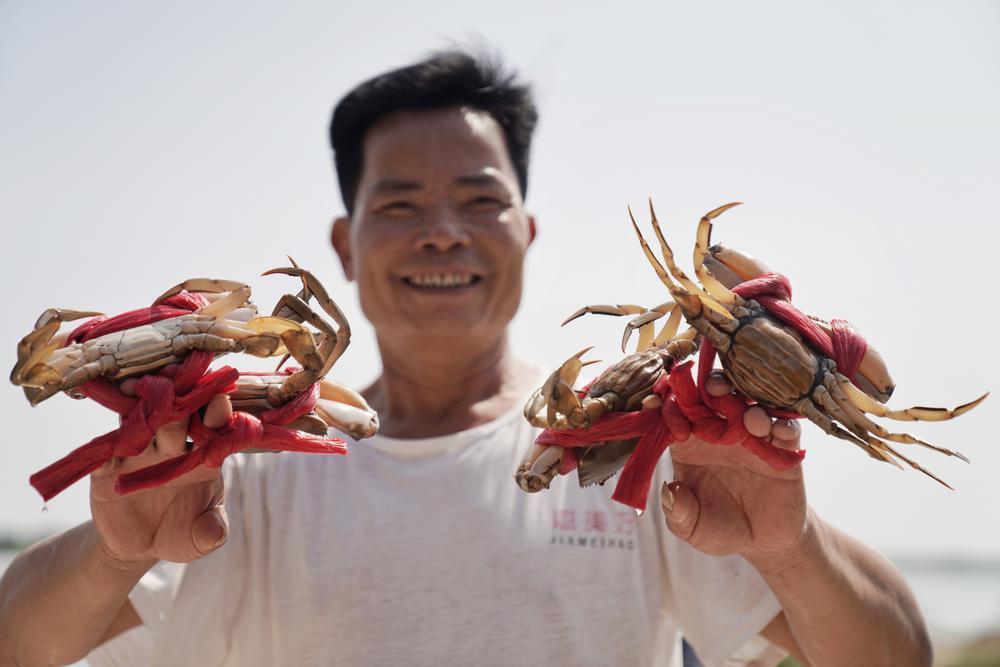Em uma coluna, Chen Xiaoqing, diretor-chefe de A Bite of China, certa vez descreveu a cena de comer caranguejo em Nansha, Guangzhou.
Quando estávamos conversando, Lao Guo apareceu com uma grande bacia de caranguejos e disse que este é o caranguejo verde mais comum em água salgada.
“O mesmo tipo de caranguejo tem um sabor completamente diferente e recebe nomes diferentes a cada estação. No estágio inicial de desenvolvimento, é chamado de caranguejo moribundo e depois chamado de caranguejo de casca pesada, caranguejo de casca mole e agora é chamado de caranguejo d'água. E depois de um certo período de tempo, seria chamado de caranguejo de carne, caranguejo de ovas", explicou o Guo. O Guo pegou um canudo, abriu a região umbilical do caranguejo, inseriu o canudo no caranguejo e entregou-me. Quando dei uma grande mordida, era realmente um delicioso suco de caranguejo.
Os diferentes estágios de crescimento do caranguejo verde Nansha são divididos em caranguejo moribundo, pasta de caranguejo e caranguejo manteiga, entre os quais um caranguejo manteiga pode ser vendido por milhares de yuans!
Como água boa produz bons caranguejos, antes de 2019, o modo de criação do caranguejo verde era extenso e tinha boa reputação, mas nenhuma marca boa.
O governo local aproveitou a oportunidade para a construção de um moderno parque industrial agrícola em Guangdong e levantou fundos para construir o Parque Industrial de Pesca no distrito de Nansha em Guangzhou, que iniciou a transformação do valor dos caranguejos verdes em Nansha. Agora, a renda média anual dos agricultores locais é de quase 200.000 yuans, aumentando verdadeiramente a renda de cada agricultor.

In a column, Chen Xiaoqing, the chief director of A Bite of China, once described the scene of eating crab in Nansha, Guangzhou.
When we were talking, Lao Guo came up with a large basin of crabs and said that this is the most common green crab in saline water.
"The same kind of crab tastes completely different and takes different names each season. In the early stage of development, it is called a dying crab and then called heavy shell crab, soft shell crab, and now it is called water crab. And after a certain period of time, it would be called meat crab, roe crab," explained Guo. Guo took a straw, opened the umbilical region of the crab, inserted the straw into the crab, and handed it over to me. When I took a big bite, it was really all delicious crab juice.
The different growth stages of Nansha green crab are divided into dying crab, roe crab paste, and butter crab, among which a butter crab can sell for thousands of yuan!
As good water produces good crabs, before 2019, the green crab breeding mode was extensive, and it had a good reputation but no good brand.
The local government grasped the opportunity for the construction of a modern agricultural industrial park in Guangdong and raised funds to build the Fishery Industrial Park in Nansha District of Guangzhou, which started the transformation of green crabs' value in Nansha. Now the average annual income of local farmers is nearly 200,000 yuan, truly increasing the income of every farmer.


《舌尖上的中国》总导演陈晓卿曾在专栏中这样描述在广州南沙吃蟹的场景——正说着,老郭端来一大盆蟹子,介绍说,这就是咸淡水里最最常见的青蟹,“同一种蟹,每个季节味道完全不一样,名字也不一样。刚刚发育它叫奄仔蟹,之后又叫重壳蟹、软壳蟹,现在它叫水蟹,再过段时间就是你们常见的肉蟹、膏蟹了”。说着,老郭拿了一根吸管,揭开螃蟹的脐部,插进吸管,递到我面前。一口气下去,全是鲜美的汁液。
这说的就是南沙青蟹不同的生长阶段,分为奄仔蟹、膏蟹、黄油蟹,其中黄油蟹一只能卖上千元。尽管好水出好蟹,但在2019年以前,青蟹养殖模式粗放,有好口碑却无好品牌。当地政府紧抓广东现代农业产业园建设的东风,自筹资金建设广州市南沙区渔业产业园,开启了南沙青蟹价值蝶变的历程。如今当地养殖户均年收入达近20万元,真正实现农民增收。









